USS Iowa BB-61 Marker
Introduction
Text-to-speech Audio
Commissoned in 1943, USS Iowa was one of the most powerful battleships in the world at her launching, and went on to see combat during World War 2 and the Korean War. The ship was modified in October 1943, adding the only bathtub ever to be installed on an American battleship, specifically for Franklin D. Roosevelt's trans-Atlantic voyage to meet with Allied leaders in Tehran. She was mothballed in 1958, but recommissioned in 1984, serving in many operations during the Cold War. On April 19, 1989 Turret Two exploded, killing 47 crewmen. This point and marker was dedicated to them on April 19, 1990.
Images
View of USS Iowa firing her main guns.
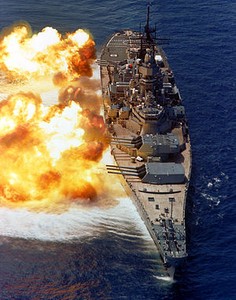
Aerial view of USS Iowa firing her main guns. Note the shockwave visible on the water.
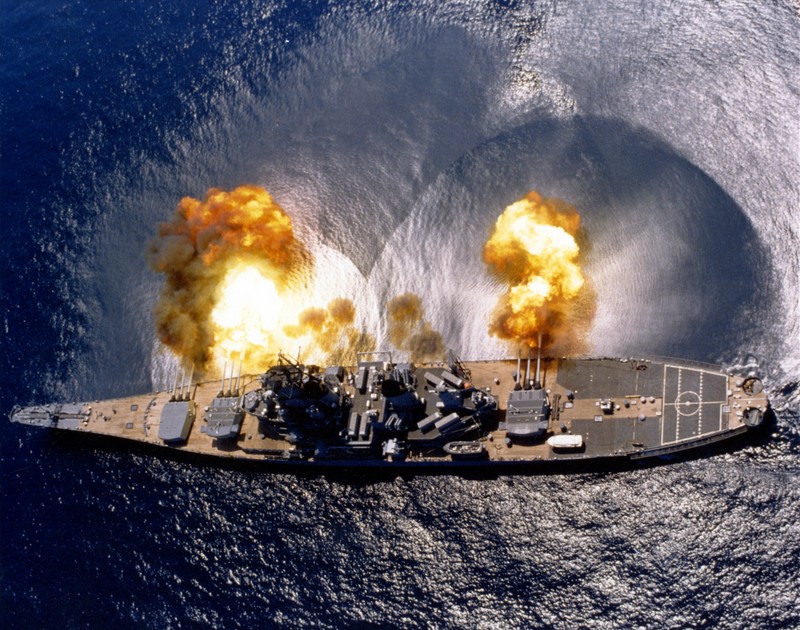
USS Iowa alongside the aircraft carrier USS Midway in 1987.
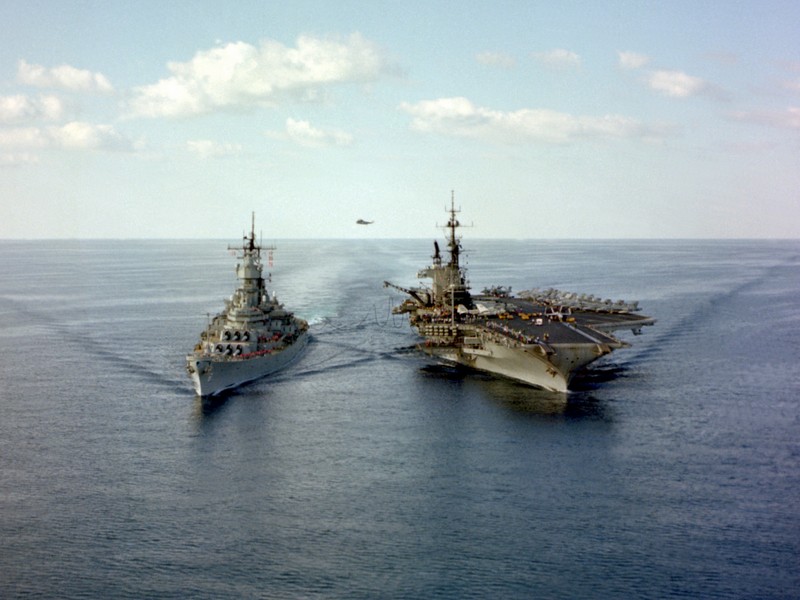
USS Iowa in drydock at Hunter's Point, 1945.
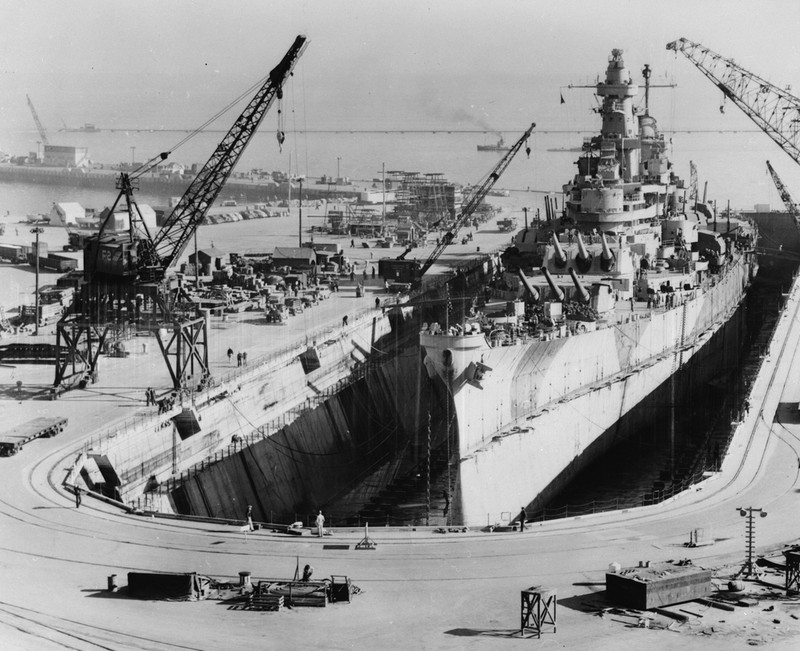
The damaged Number Two turret smokes while being cooled with seawater shortly after the 1989 explosion.
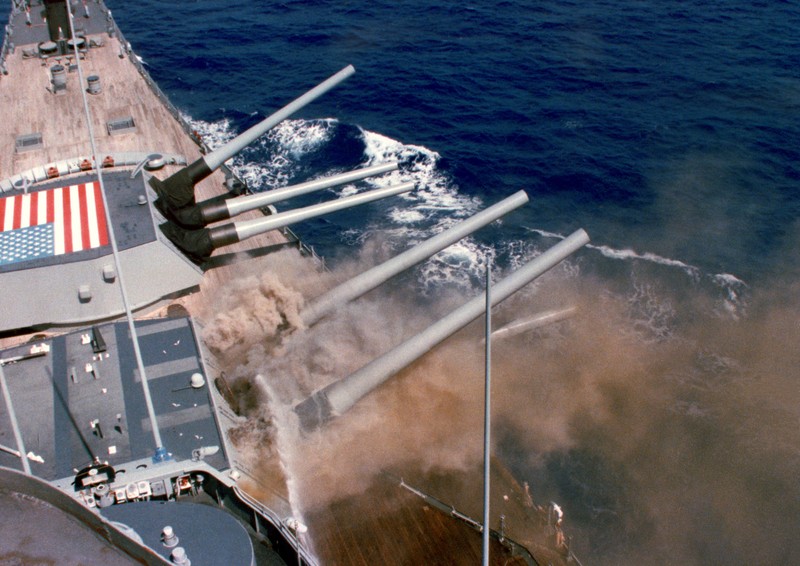
View of the damaged Number Two turret.
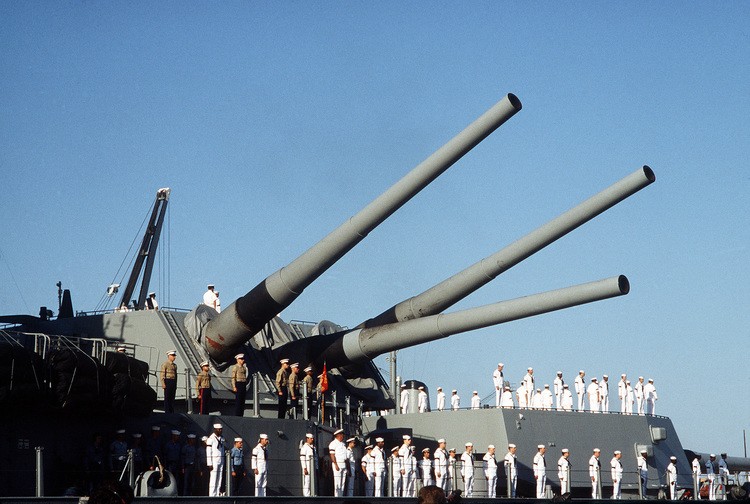
Cutaway view of a gun turret like the one damaged in Iowa's 1989 explosion.
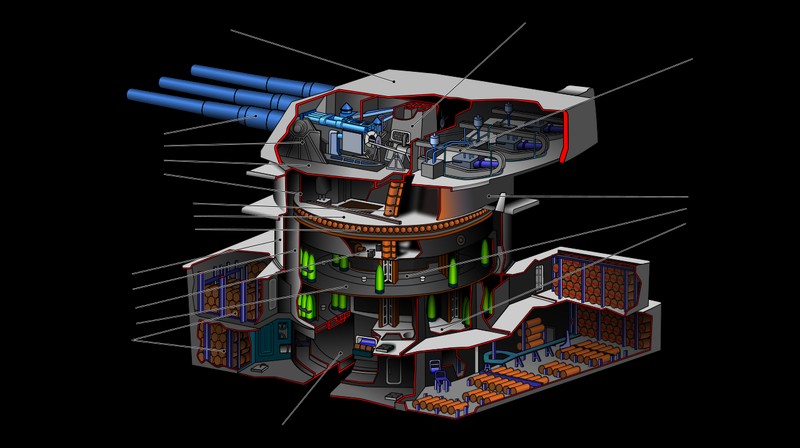
Backstory and Context
Text-to-speech Audio
Plans commenced in 1938 to build a new type of "fast battleship" for the U.S. Navy, and in February 1943, in the midst of World War II, the USS Iowa was commissioned and sent to join the U.S. Atlantic Fleet. Later that year, one of her first assignments was transporting President Franklin D. Roosevelt to the Tehran Conference, where he met with Winston Churchill and Josef Stalin.
The ship did not see combat in the Atlantic, and shortly after returning President Roosevelt to the United States, she departed in January 1944 to join the Pacific Fleet in action against the Japanese. The ship and her crew served with distinction until the end of the war, after which she served in training exercises until deactivation in 1949. She was reactivated for service in the Korean War, then mothballed in Philadelphia in 1958.
She was recommissioned, refitted and modernized in 1982-1984 as part of President Ronald Reagan's "600-ship navy" response to heightened Cold War tensions with Soviet Russia, and served around the world, including Central America and the Persian Gulf.
But on April 19, 1989, during a routine gunnery exercise, an explosion ripped through the Number Two gun turret, instantly killing 47 crewman. The turret's powder magazine was quickly flooded to prevent a secondary explosion, an action which may have saved the ship. Eric Chase, a sailor aboard the Iowa who participated in the cleanup of the crippled turret immediately after the explosion, recalled:
The incident remains one of the deadliest peacetime occurrences in the history of the U.S. Navy. A Navy investigation blamed one of the sailors who was killed, Clayton Hartwig, for having set off the explosion intentionally, and presented a case claiming Hartwig was suffering from suicidal depression after being spurned by a homosexual lover.
Growing public criticism, however, forced Congress to open an independent investigation which found that the likely cause of the explosion was not sabotage, but improper gunpowder storage (which had been manufactured in the 1930s), overly rushed efforts to refit Iowa for service during her reactivation, and negligence on the part of her commander, Captain Fred Moosally.
The Iowa was decommissioned for the last time in 1990. In 1991, two years after the incident, the Navy issued a formal apology to the family and memory of Clayton Hartwig for having attempted to blame the incident on him. The marker here, dedicated by the State of Virginia, memorializes the 47 sailors who lost their lives in the 1989 explosion.
Today, the USS Iowa resides in San Pedro harbor, California, and serves as a floating museum dedicated to the vessel's service.
The ship did not see combat in the Atlantic, and shortly after returning President Roosevelt to the United States, she departed in January 1944 to join the Pacific Fleet in action against the Japanese. The ship and her crew served with distinction until the end of the war, after which she served in training exercises until deactivation in 1949. She was reactivated for service in the Korean War, then mothballed in Philadelphia in 1958.
She was recommissioned, refitted and modernized in 1982-1984 as part of President Ronald Reagan's "600-ship navy" response to heightened Cold War tensions with Soviet Russia, and served around the world, including Central America and the Persian Gulf.
But on April 19, 1989, during a routine gunnery exercise, an explosion ripped through the Number Two gun turret, instantly killing 47 crewman. The turret's powder magazine was quickly flooded to prevent a secondary explosion, an action which may have saved the ship. Eric Chase, a sailor aboard the Iowa who participated in the cleanup of the crippled turret immediately after the explosion, recalled:
"We knew there wasn't going to be anybody left alive....I knew that there was going to be devastation...everything is Black...and it smells...I am just in this gigantic carnage dump."2
The incident remains one of the deadliest peacetime occurrences in the history of the U.S. Navy. A Navy investigation blamed one of the sailors who was killed, Clayton Hartwig, for having set off the explosion intentionally, and presented a case claiming Hartwig was suffering from suicidal depression after being spurned by a homosexual lover.
Growing public criticism, however, forced Congress to open an independent investigation which found that the likely cause of the explosion was not sabotage, but improper gunpowder storage (which had been manufactured in the 1930s), overly rushed efforts to refit Iowa for service during her reactivation, and negligence on the part of her commander, Captain Fred Moosally.
The Iowa was decommissioned for the last time in 1990. In 1991, two years after the incident, the Navy issued a formal apology to the family and memory of Clayton Hartwig for having attempted to blame the incident on him. The marker here, dedicated by the State of Virginia, memorializes the 47 sailors who lost their lives in the 1989 explosion.
Today, the USS Iowa resides in San Pedro harbor, California, and serves as a floating museum dedicated to the vessel's service.
Sources
http://www.markerhistory.com/uss-iowa-marker-bb-61/
2. Kime, Alex. Throw It In The Ocean. Here Be Monsters. July 09, 2014. Accessed September 06, 2017. https://www.hbmpodcast.com/podcast/hbm036-throw-it-in-the-ocean-explicit.
3. Sia, Richard H.P.. "Admiral apologizes to kin of sailor killed in Iowa blast Settlements expected in legal claims soon." The Baltimore Sun(Baltimore), October 18, 1991. http://articles.baltimoresun.com/1991-10-18/news/1991291077_1_hartwig-apology-petty-officer
4. Hathaway, Brad. "Battleships: Issues Arising From the Explosion Aboard the U.S.S. Iowa." United States General Accounting Office. Published January 1991. http://archive.gao.gov/d21t9/143037.pdf
2. Kime, Alex. Throw It In The Ocean. Here Be Monsters. July 09, 2014. Accessed September 06, 2017. https://www.hbmpodcast.com/podcast/hbm036-throw-it-in-the-ocean-explicit.
3. Sia, Richard H.P.. "Admiral apologizes to kin of sailor killed in Iowa blast Settlements expected in legal claims soon." The Baltimore Sun(Baltimore), October 18, 1991. http://articles.baltimoresun.com/1991-10-18/news/1991291077_1_hartwig-apology-petty-officer
4. Hathaway, Brad. "Battleships: Issues Arising From the Explosion Aboard the U.S.S. Iowa." United States General Accounting Office. Published January 1991. http://archive.gao.gov/d21t9/143037.pdf
